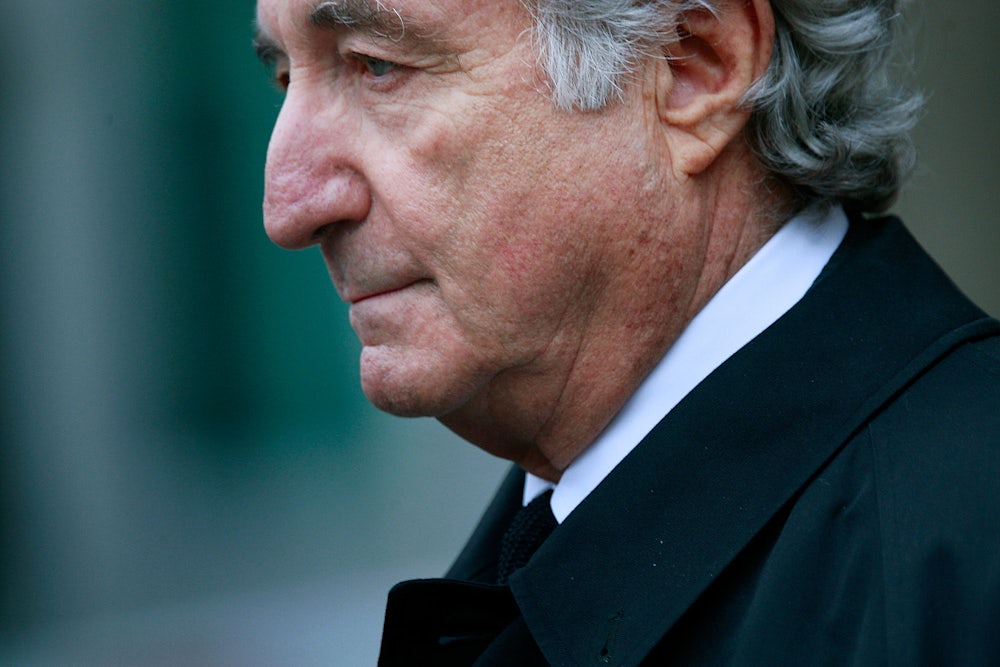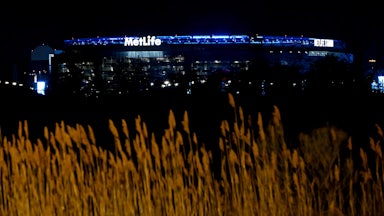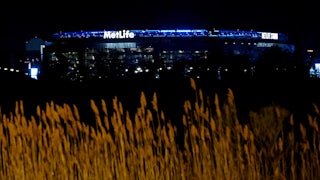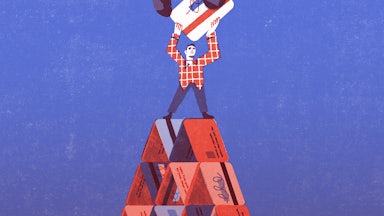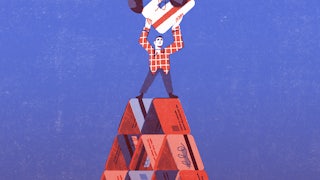What also must be known about Bernie Madoff, who died on Wednesday at the age of 82, is that prior to the revelation in December 2008 that he had been running the world’s largest Ponzi scheme, he was, for most of his career, one of the most well-respected figures in finance. He was anything but marginal. He served as the chairman of Nasdaq three different years in the 1990s, and served on the boards of many Wall Street organizations. The funds he ran attracted some of the richest people in the world. His niece married the former assistant director of the Security and Exchange Commission’s Office of Compliance Inspections and Examinations. (In 2007, he bragged about a “very close” relationship with an SEC regulator. “My niece even married one,” he laughed.) He was an insider.
Madoff was also considered an innovator. His firm was one of the first into the nascent electronic market. He pioneered a process called “payment for order flow,” in which one broker pays another to process the other broker’s stock orders.
Madoff, even during his almost 20-year run defrauding people, had a host of legitimately successful businesses, including a market-making arm of his securities firm run by his sons. Without the Ponzi scheme, Bernard Madoff would likely have been a rich and comfortable man.
So what is so strange about Madoff and his crimes is that it is still unclear why he did it. Why did he continually, beginning at least in the early 1990s, take people’s money and then use that money to pay other people what they thought were returns on their investment? One reason that is often ignored is that our financial system made it really easy to do. And to understand how Madoff created the largest grift in Wall Street history, it’s important to see him as a figure who rose along with the fortunes of Wall Street in general. In this way, Madoff wasn’t just a bad actor who destroyed billions of dollars and the life savings of many; he was the natural consequence and onetime paragon of our financial system, a system that allows dangerous levels of secrecy and disastrous speculation and risk, and willfully blinds itself to fraud in its delirious search for ever-vanishing returns on investment.
He began trading in the 1960s, before the financial markets exploded into national prominence. He elbowed his way into the industry by trading penny stocks on unlisted exchanges that the clubby Wasps of the New York Stock Exchange thought were too good to trade. As America’s postwar industrial boom began to wane through the 1970s, growth slowed and yet inflation started to rise. The federal government, desperate for a solution, decided to raise interest rates, making it expensive to be a businessman but incredibly profitable to be a banker. The type of trading that Madoff was skilled in suddenly became a business everyone wanted to be in on. “He was a man with a good idea who was also a terrific salesman,” Charles V. Doherty, the former president of the Midwest Stock Exchange, told The New York Times in 2009. “He was ahead of everyone.”
This period also saw the rise of the institutional funds, largely funded by union pensions, that needed to invest their money in order to cover their future pension obligations. They had billions of dollars that needed to be invested. Hedge funds sprouted up in order to manage these institutional funds. Madoff’s rocket took off as he sold himself as a canny investor who could guarantee a steady return.
Trouble struck in the early 1990s as the United States encountered a recession. Though the scheme may have started as far back as the 1970s and 1980s, Madoff remarked that it was in the early 1990s that he converted his hedge fund into a scam. The institutional investors were demanding a return and would pay just about anyone who could promise them gains in the market. Madoff took their money, and without any money coming in, used some of it to pay other funds, thus digging himself a hole. After a while, the hole was so big, and he would have owed such an enormous, unpayable sum to end the Ponzi scheme, that he absolutely could not get out of it. It’s likely that he already owed billions of dollars.
Madoff shouldn’t have done that, it is easy to say now. He should have fessed up and done the right thing. But this is not how a functioning financial system works. It does not run on the personal moral compass of financiers. Credit, on a very basic level, requires trust, and trust is fostered by transparency and oversight. However, throughout the 1990s, finance became less overseen and less regulated than ever. Bill Clinton repealed Glass-Steagall, allowing banks to speculate; Alan Greenspan declared financial regulation a bad idea; and big banks were allowed to merge and consolidate to an unimaginable degree. Instead of making sure hedge funds like Madoff’s had to prove they had the money they said they did and that they weren’t robbing their customers, it became even more difficult to find out whether Madoff was lying. Madoff understood this as well as anyone. He said in a 2009 interview from prison that agency examiners “never asked” for records to corroborate his claims.
Madoff’s fake hedge fund rode the dot-com boom, used its fake funds to ride the rapids of the crash, and then rode the early-2000s boom. The whole scheme was undone by the financial crash in 2008 when his lenders all withdrew their money at the same time—amounting to almost $7 billion he didn’t have. The game was up.
However, the timing of Madoff’s arrest in the winter of 2008 tied Madoff to the larger financial crash. This masked the fact that his crimes had been going on for at least 20 years and had nothing to do with subprime mortgages, tangled derivatives, or over-leveraged banks. But to connect the two obscures what Madoff’s story can tell us about our impossibly broken financial system that puts the savings of millions at stake.
Madoff’s crimes revealed how easy it is to fool a bunch of financiers who are looking for returns in a low-growth world. Looking for returns that might not be there. He also showed just how simple the financial system can be—and how easy to scam. He didn’t spread his money around to hide the fraud; he deposited much of the money from investors at just two banks and, after one bank detected fraud and dropped him in 1996, only one account at JP Morgan Chase. Then he cooked up a completely fake investing “strategy” and a few documents that seemed to suggest he was investing the money. Going over the case against Madoff, it’s abundantly clear that no one looked very hard. (In a statement in 2014, prior to paying out $2.6 billion in a single settlement, the bank released a statement blandly conceding, “We could have done a better job pulling together various pieces of information and concerns about Madoff from different parts of the bank over time.”) Too many people were getting rich off managing Madoff’s money or were too desperate to get returns on their investments to care how they got it.
Today, things are not any better and they might be worse. While the Dodd-Frank legislation increased the reporting requirements for banks, nonbanks like hedge funds, private equity funds, and family offices, which manage trillions of dollars, have few reporting requirements, and much of the riskiest trading has just been shifted to their balance sheets. Could another Madoff be lurking in the shadows, waiting to tip cover and cause another financial crash? Easily. Just the other week a family office—a largely unregulated bank-like financial entity that is intended to invest the fortune of a single family or individual—called Archegos Capital Management was found to have sold off a reported $20 to $30 billion, shocking the financial world and sending huge price fluctuations around the world.
Some of the systems that Madoff created, like “payment for order flow,” which many experts contend is tantamount to a kickback and borderline fraud, is now the primary way trading apps like Robinhood make their money. In fact, as the GameStop drama unfolded, it was revealed that Citadel Securities was paying Robinhood to process all those GameStop stock purchases, possibly making millions by selling inflated shares to unsophisticated investors. But then again, we may never know what really happened, because Citadel is veiled in secrecy, free to keep any ill-gotten profits, just as long as it doesn’t happen to implode during a financial crisis. Bernie Madoff is dead, long live Bernie Madoff.
